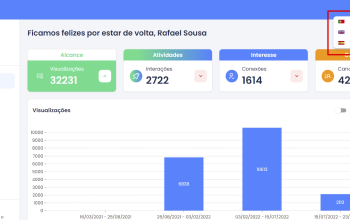Unleashing the Full Potential of i18next: Tips and Tricks


Internationalization (i18n) and localization (l0n) are important aspects of any web or mobile application. i18next is a powerful JavaScript library that makes it easy to handle i18n and l10n in your application. In this post, we'll explore some tips and tricks for using i18next to its full potential.
Unlock the secrets of successful translations with i18next. Explore advanced tips and techniques to handle complex translation scenarios. From pluralization to context-based translations, this guide will empower you to deliver accurate and culturally appropriate content.
1. Use the namespace feature:
One of the most powerful features of i18next is the ability to use namespaces. Namespaces allow you to separate your translations into different groups, making it easier to organize and manage your translations. For example, you can create a namespace for each feature or module in your application, making it easier to update and maintain translations for that specific feature.
Check out this section in the video crash course!
2. Utilize pluralization:
i18next also has built-in support for pluralization, making it easy to handle different plural forms of a word in different languages. To use this feature, simply specify the different plural forms of a word in your translation file and i18next will automatically use the correct form based on the current language and count.
Check out this section in the video crash course!
3. Take advantage of interpolation:
i18next supports interpolation, that allows you to insert dynamic values into your translations. This can be useful for displaying user-specific information, such as a username or a date. To use interpolation, simply include placeholders in your translation string, and pass an object containing the values to i18next.
Check out this section in the video crash course!
4. Handle fallbacks:
i18next provides several fallback options to handle missing translations.
- Language fallback: you can specify a fallback language in case the current language is not available.
- Namespace fallback: you can specify a fallback namespace in case the current namespace is not available.
- Key fallback: you can specify a fallback key in case the current key is not available.
5. Use a language detector:
i18next-browser-languagedetector is a plugin that detects the user's preferred language based on their browser settings. This can be very useful for providing a better user experience by automatically displaying the website in the user's preferred language.
6. Leverage i18next backend plugins:
i18next offers several backend plugins that allow you to load translations from various sources, such as a JSON file, a remote server, or a database. This can be useful for loading translations on demand or for providing an offline mode for your application. Some examples of i18next backend plugins include i18next-http-backend and i18next-fs-backend. With the help of i18next-chained-backend you could also combine different backends to create fallbacks or caching concepts.
7. Use the context feature:
i18next provides a context feature which allows you to provide additional context information for a translation in order to disambiguate between different translations of the same key. This can be useful when a word or phrase can have multiple meanings and the context helps to disambiguate the intended meaning. For example, providing gender-specific translations, like "he" and "she" for a specific phrase.
8. Use different i18n formats:
i18next supports different i18n formats such as ICU message format which is widely used in Java and C++. This allows you to use the same translations across different platforms and technologies. To use different i18n formats, you can use i18next plugins such as i18next-icu.
9. Integrate with locize:
locize is a cloud-based translation management system (TMS) that integrates seamlessly with i18next. By using locize, you can easily manage your translations and collaborate with translators and editors. locize also provides a powerful editor and a translation memory, making it easy to reuse translations and ensure consistency across your application. To integrate locize with i18next, you can for example use the i18next-locize-backend plugin. This plugin allows you to load translations from the locize CDN and automatically syncs them with your application. Here you can see what this could look like.
Check out this section in the video crash course!
Conclusion:
In this post, we've explored some tips and tricks for using i18next to its full potential. By using namespaces, pluralization, interpolation, fallbacks, i18next-browser-languagedetector, leveraging i18next backend plugins and context feature, you can provide a better user experience for your users. Integrating it with locize allows you to easily manage your translations and collaborate with translators and editors. With i18next, you have all the tools you need to make your application truly international. If you're new to i18next, you might check out the complete free i18next crash course video:

